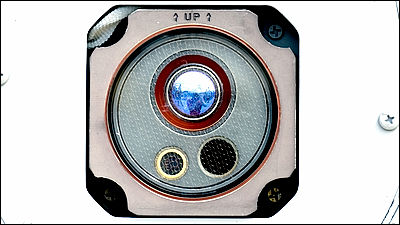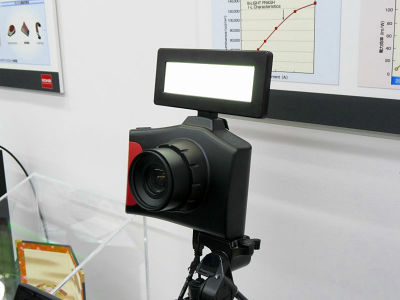Practical application of "micro LED display" approaching in-house manufacturing of Apple will dramatically improve the performance of AR equipment approaches

It is expected as a next-generation display technology exceeding OLED (organic EL display)Micro LED(mLED) are progressing to the stage of practical application soon. The micro LED is superior to the organic EL display in terms of luminance, saturation, and power efficiency, and it can be used for a long time by suppressing the battery consumption of the smartphone, and it can be utilized as a high definition display for the VR / AR device It is expected.
Coming Soon to a Wrist Near You: MicroLED Displays - IEEE Spectrum
https://spectrum.ieee.org/semiconductors/optoelectronics/coming-soon-to-a-wrist-near-you-microled-displays
In January 2018, UK's semiconductor device manufacturer Plessey Semiconductors is preparing to ship the industry's first monolithic micro LED display in the first half of 2018AnnouncementDid. Micro LED is a small LED with a size of 0.1 mm or less which is directly formed on an electronic substrate and can be made to emit light as each pixel of a display, and it has the performance which is not so high as compared with the conventional liquid crystal panel It is said to demonstrate the performance even higher than the organic EL display to be evaluated.
It seems that Plessey Semiconductors will ship full-scale shipment of micro LED display expected as the most promising candidate for next generation display technology, but behind it there are various manufacturers, and furthermore Apple It is believed that IT giants such as Facebook and Facebook are also chasing with furious momentum.
The reason that Apple and Facebook are paying attention to micro LED displays is that they are expected to bring significant progress in the fields of VR (virtual reality) and AR (augmented reality). In addition to the performance of "high image quality", "high definition", and "high efficiency", the micro LED display has the feature of "high brightness". In the case of an organic EL display boasting high luminance as a self-luminous display, about 1000nitAlthough the brightness of the degree is regarded as the maximum class, the micro LED display realizes 100,000 nit which is much higher than that, and in the future it is expected to realize high brightness of 1 million nit class.

This ultrahigh brightness is turned on, especially in the field of AR technology. When projecting virtual reality images on transparent glass and trying to mix reality and virtual, it is necessary to project bright light that is not defeated by the strength of natural light. With conventional technology, it was difficult to project a strong light which is not beyond the strength of light such as the sun and electric light, but micro LED display with high luminance which differs by 2 to 3 digits by nit number It is expected that this problem can be cleared.

We are developing a nanowire-based micro LED display with French startupAlediaCEO, Giorgio Anania says, "This will be a shift towards a new generation of technology." In January 2018, Aledia received a capital of 37 million dollars (about 4 billion yen) from venture capital. In addition, Sweden's development of micro LED display with similar technologyGloHas earned $ 15 million (about 1.6 billion yen) investment under the initiative of Google.
Apple is entering this field in the "acquiring development companies" approach. The company acquired LuxVue of micro LED display development startup in 2014, and it can be said that the development scale is being expanded from the subsequent patent application situation. Also, Facebook, which holds Oculus VR as a subsidiary, is reaching out to the micro LED display industry, and in 2016 he acquired InfiniLED, a development company.
Although the high brightness of the micro LED display is as described above, "high efficiency" is also high compared to the conventional technology. Although the power efficiency of liquid crystal display and organic EL display is about 5 to 7% in general value, the efficiency of gallium nitride LED used for micro LED display reaches 70% how much. Since this efficiency depends on the size of the element, efficiency is reduced if it is downsized to the size as large as the element used in the micro LED display. Nevertheless, the final efficiency is also seen to be "15%", which is technically reasonable to call "innovative".
The micro LED display, which is still under development, has a poor yield due to high defective rate at the time of manufacture, and the fact that the cost is still high still has become one of the big problems for practical use Thing. However, as organic EL displays gradually begin to penetrate the world of smartphones, it is not thought that the micro LED display begins to enter the field of smart phones, smart watches and AR devices is not so far in the future.

Related Posts:
in Hardware, Posted by darkhorse_log






